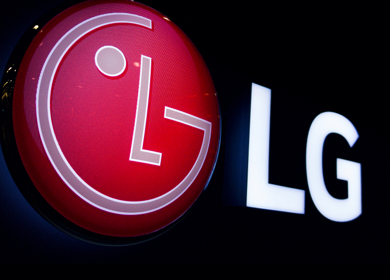Sonic branding speaks volumes: is it something brands must no longer ignore?
Published: June 06, 2023

In this digital era, every business, be it small or big, has a huge crowd of competitors. By the day, it has become increasingly difficult for businesses to differentiate themselves from others and to build their own identity.
And, to make effective differentiation, brands are compelled to experiment with countless branding strategies so that they can stand out and be equal while competing against big companies.
Among many other strategies, creating a sonic identity for a brand is one of the less discussed strategies when compared to other forms of branding, in spite of the fact that every renowned brand in the world, such as Apple, NBC, etc., has a signature sound associated with it.
Here are some examples of brands that used sonic identity as a powerful tool for their business and reaped amazing results.
TaxAct:
For a company like TaxAct, which provides an online tax filing service, competing against big companies was highly challenging. The company had spent money on clever advertisements, but when consumers remembered the television ads they watched, they thought they were for the industry incumbent. Another issue was the name, which some mistook for a bill in the United States Congress instead of the name of a tax-preparation company.
To address these issues, TaxAct chose to create a sonic identity that helped the company differentiate itself from established companies and generated enough attention for its name.
For which, the brand's agency developed a fantastic character called April Showers and invented storylines for TV commercials that depict an enchanted moment when a taxpayer's tax refund falls from the sky. TaxAct also created a sonic logo with a repeated T syllable (T-T-T Tax Act) to help consumers remember.
Sparkling ice:
Sparkling Ice is a sparkling water brand whose name consumers often misunderstand. The problem originated from its logo, which assembled the words sparkling and ice on top of each other. As a result, customers assumed the brand was called Ice.
However, the term "ice" does not adequately describe the product, which is sparkling water in unique and refreshing flavours. It also made finding the brand through a search engine difficult.
To meet this challenge, Sparkling Ice developed a sonic identity that emphasized the word sparkling. The sonic logo is a slender, upbeat jingle with the word sparkling repeated several times. The jingle appears in all of Sparkling Ice's marketing materials.
As an impact of this move, Sparkling Ice has seen great success in terms of standing out from competitors and communicating its distinctive selling proposition to consumers.
Why should brands pay attention to creating a sonic identity?
In a world filled with highly receptive audiences, the creative boundaries for brands are only expanding. As people and industries evolve, marketers and brands need to find the ways in which audiences prefer them the most.
In that regard, from TV ads to digital advertising to the metaverse, the one thing that remains constant and compulsive among audiences is sound.
Thus, undeniably, the sonic identity presents a huge opportunity for marketers to navigate and communicate in this digital setting with audiences.
And the above case studies reiterate that. Here are a few takeaways from them for marketers:
- As sonic identity creates a distinct brand persona and leaves a lasting impression, it can help brands significantly differentiate themselves from competitors and increase brand awareness.
- Being specific with what challenges we want to address by creating a sonic identity is critical for brands. And the sparkling ice results emphasize that.
- Marketers can leverage sonic identity to bolster a consistent brand image by incorporating sonic elements throughout different customer touchpoints. This cohesive sonic identity helped sparkling ice achieve the best results.
Besides, creating a sonic identity can be highly impactful for brands in many ways.
- As sound has a powerful psychological effect, marketers can use the sonic identity to build an emotional connection with their audiences by carefully designing the audio elements of their brand. This way, they can strengthen brand loyalty and improve the overall brand experience.
- By consistently using the power of sound across various touchpoints of the brand, such as radio ads, online videos, or their retail stores, they can create a unified brand experience for users. This will in turn help them strengthen brand recall and familiarity among the target audiences.
- As sonic identity is not limited by language or cultural differences, it can be extremely beneficial for global brands to establish a consistent and recognizable presence across diverse markets.
- As sound has the unique magic of sticking with human memory, by crafting a captivating sonic identity, brands can make themselves more memorable for audiences, positively influence brand recall and audience purchase decisions, and maximize the effectiveness of their campaigns.
Having said that, it is important for brands to keep in mind that they cannot drive positive outcomes for their businesses through sonic identity unless they spend thoughtful time on careful research and strategic planning to create an impeccable sonic identity for their brand.










Be the first one to comment.